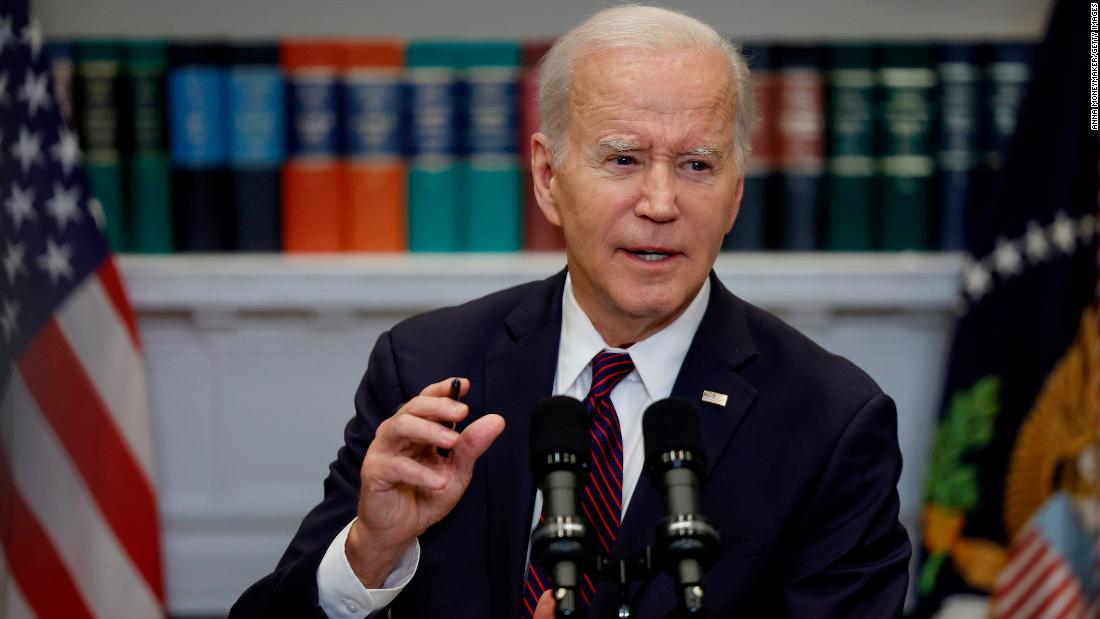(CNN) The Biden administration is rolling out unprecedented measures intended to levy consequences against migrants who cross the border unlawfully in the wake of Title 42’s expiration this week. But, officials concede, the high number of border arrests in the coming days will still pose a steep challenge.
President Joe Biden put it simply Tuesday: “It’s going to be chaotic for a while.”
Since Biden took office, administration officials have been aware that Title 42 would eventually have to go as the pandemic, on which the authority is based, receded. The rule became a source of tension, both within the administration and politically as Democrats hammered the administration for not ending it sooner and Republicans sought its extension.
Now, more than two years into Biden’s presidency and on the heels of his campaign announcement, the rule is set to expire on Thursday at 11:59 p.m. ET, in conjunction with the end of the Covid-19 public health emergency. And it will pose an immediate challenge for the administration.
“This is a really unprecedented moment in the Americas,” a senior administration official said Tuesday. “Twenty million people are displaced across the region. The Covid-19 pandemic and political insecurity, and climate change have exacerbated what was normally pushing people to migrate.”
Administration officials are setting plans in motion to try to manage the flow. US border authorities encountered more than 10,000 migrants along the US southern border on Tuesday, according to a Homeland Security official, already surpassing government estimates in the aftermath of Title 42 just days from it expiring.
Among the new policy measures the administration is putting into place are a new asylum rule that will largely bar migrants who passed through another country from seeking asylum in the US. The rule, proposed earlier this year, will presume migrants are ineligible for asylum in the US if they didn’t first seek refuge in a country they transited through, like Mexico, on the way to the border. Migrants who secure an appointment through the CBP One app will be exempt, according to officials.
If migrants are found ineligible for asylum, they could be removed through the speedy deportation process, known as “expedited removal,” that would bar them from the US for five years.
The administration also plans to return Cubans, Venezuelans, Haitians and Nicaraguans to Mexico if they cross the border unlawfully, marking the first time the US has sent non-Mexican nationals back across the border.
Both policies have been fiercely criticized by Biden allies who argue they’re too restrictive and break with US law, as well as Biden’s campaign commitments to restore asylum.
But senior administration officials stress the actions are necessary to encourage people to use lawful pathways to come to the US. That includes parole programs for eligible nationalities to apply to enter the US and expanding access to an app for migrants to make an appointment to present themselves at a port of entry.
The State Department also plans to open about 100 regional processing centers in the Western hemisphere where migrants can apply to come to the US, though the timeline is unclear.
“We have, however, coupled this with a robust set of consequences for noncitizens who, despite having these options available to them, continue to cross unlawfully at the border,” another senior administration official told reporters Tuesday.
But the challenge officials face on the border also boils down to logistics.
As of Wednesday morning, there were more than 28,000 migrants in US Customs and Border Protection custody, according to the Homeland Security official.
When asked by CNN Tuesday what measures authorities are taking to drive down in-custody numbers, the senior administration official said officials are working closely with NGOs and have expanded transportation contracts.
“We have been moving some individuals laterally along the border to other parts of the border where there is more capacity,” the senior administration official said, adding: “We are encountering large numbers of noncitizens in the last few days. We saw this in the lead up to the potential lifting of Title 42 in May of last year and then again in December. And we’re seeing it again.”
CBP is opening two new holding facilities, and Immigration and Customs Enforcement is ramping up deportation flights. The Department of Health and Human Services, which is charged with the care of unaccompanied migrant children, is also increasing its capacity.
The Department of Homeland Security has also deployed up to 1,000 asylum officers to interview asylum seekers, deployed “hundreds” of additional law enforcement personnel from other agencies within the department, hired “thousands” of contract personnel, and received assistance from 400 volunteers, officials said.
“We believe there’s a robust set of measures in place that will over time tamp down these flows but there’s no doubt the first few days, weeks will be challenging,” the senior administration official said.
Credit: Source link



































